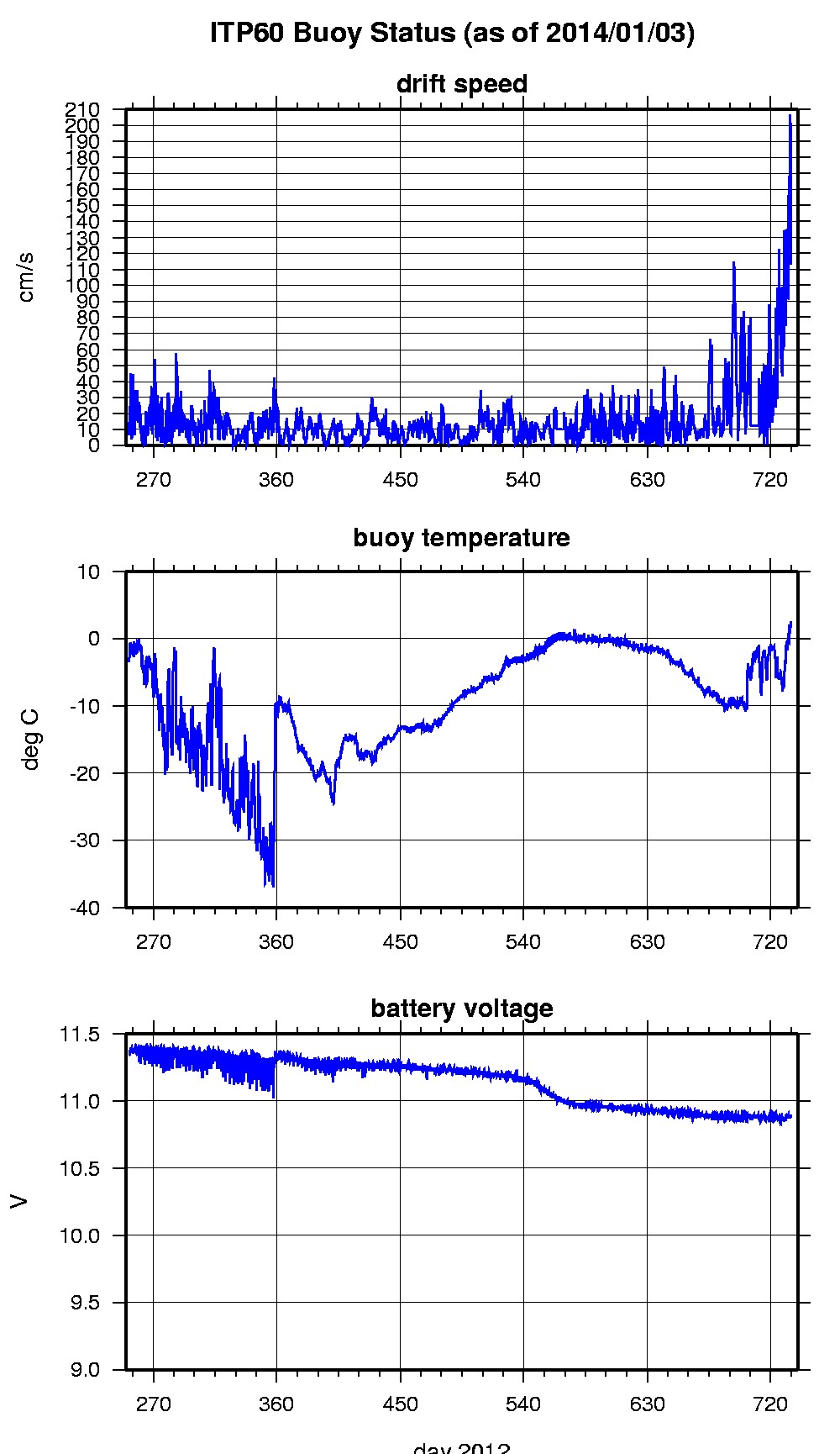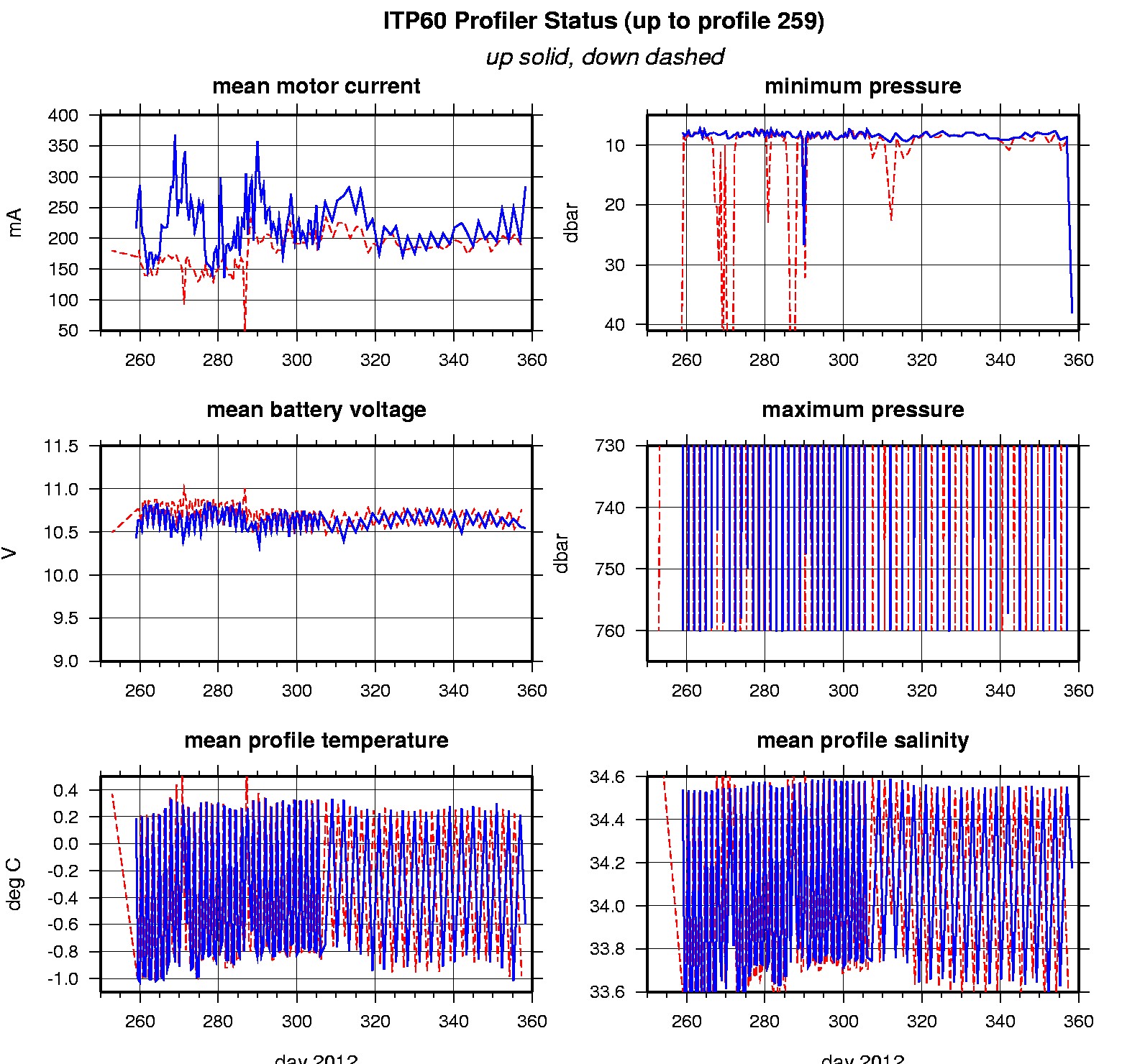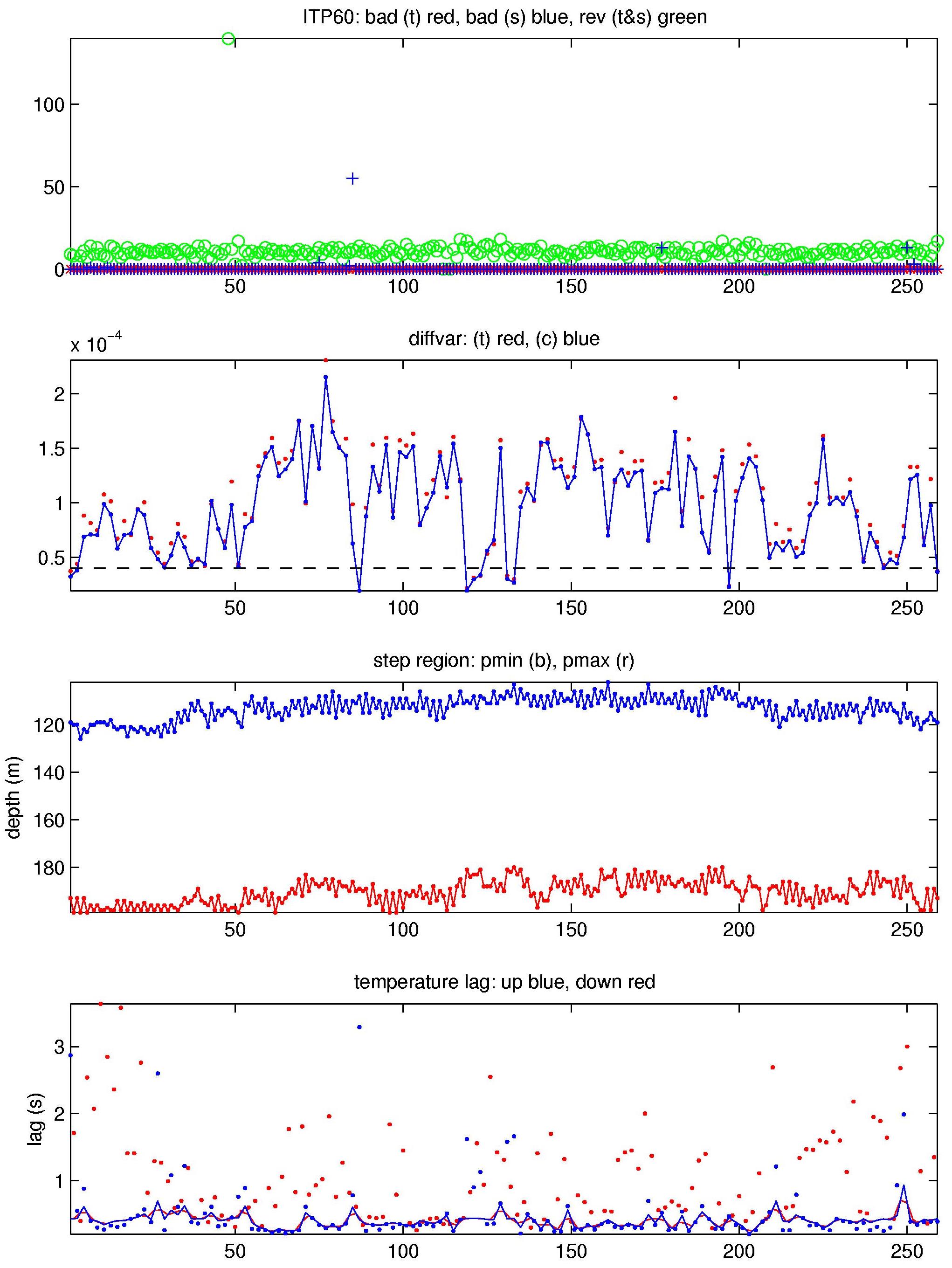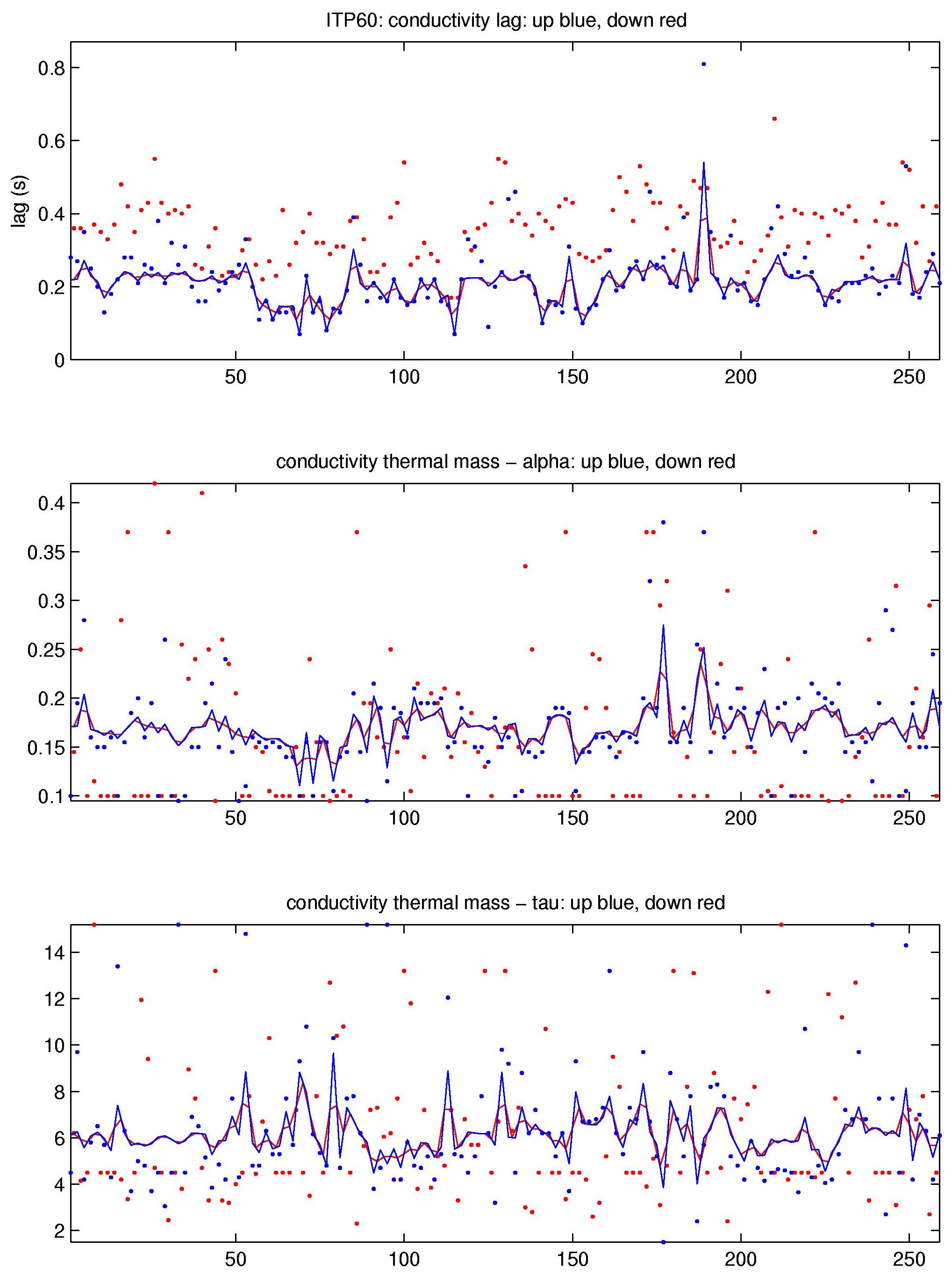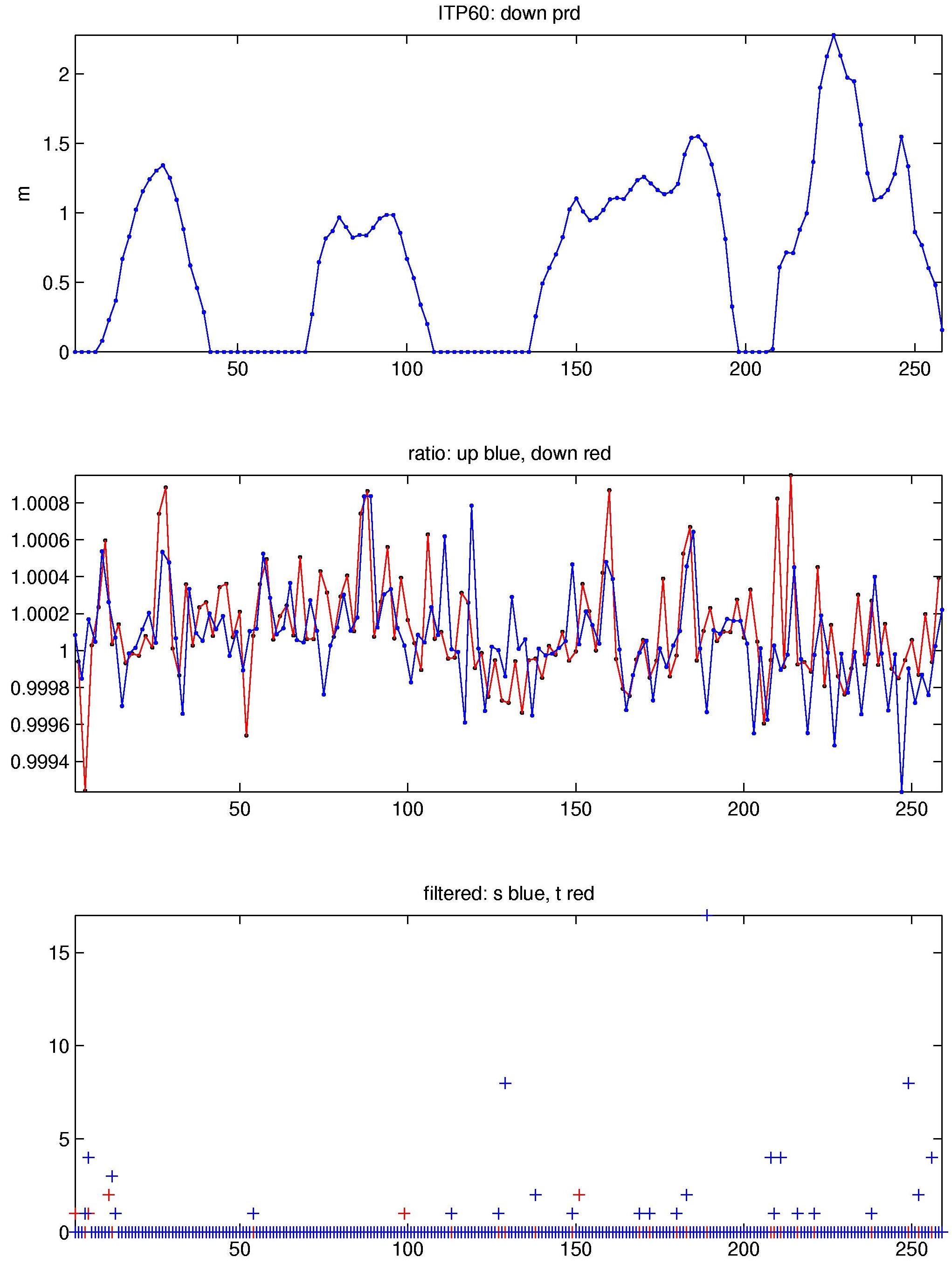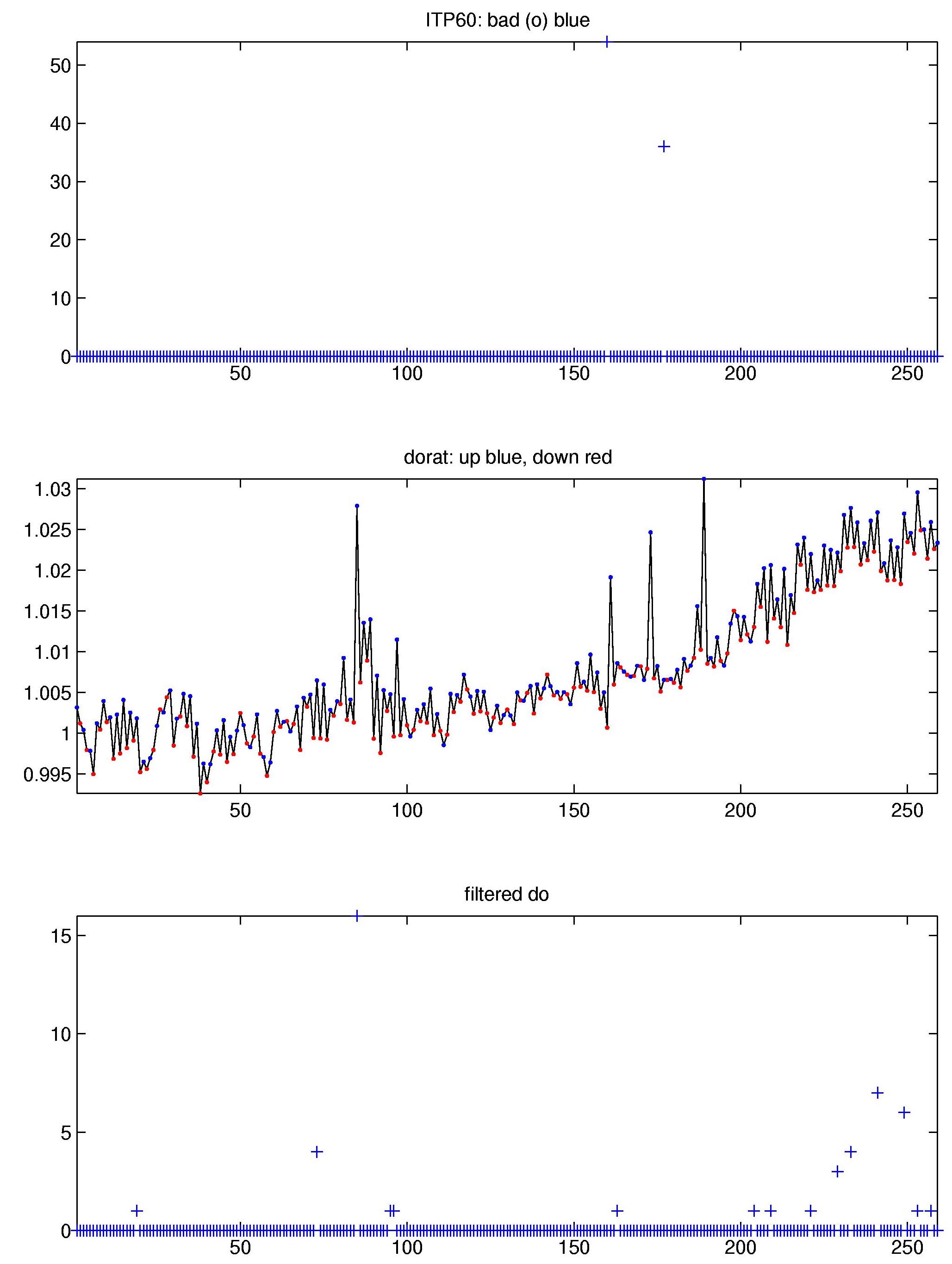ITP60 Data Processing
The 258 profiles that were transmitted from the ITP were processed according to the procedures described in the ITP Updated Data Processing Procedures. The processing parameters for are shown in the figures to the right. The biosuite sensor data handling are described in Laney et al., (2014). Buoy drift speeds were infrequently more than 30 cm/s so the profiler covered nearly the full extent of most profiles that it communicated to the surface package.
The temperature and salinity data were almost entirely free of obvious fouling. Thermohaline staircases were present during the time series in the deep profiles, and the lag correction estimates were in typical ranges and mostly constant over time. The profile-to-profile potential conductivity corrections were also mostly typical and constant. The dissolved oxygen sensor data were also very clean while the profile-to-profile corrections increased gradually. The biosuite sensors all obtained excellent data over the lifetime of the profiler, as well.
Unfortunately, the SAMI pCO2 sensor mounted at 6 m did not return good data, but the companion microcat did provide time series of temperature, salinity and dissolved oxygen.
See the Data Products tab to the left for descriptions of the three levels (I, II, III) of data processing and to access all data.
References:
Laney, S.R., R.A. Krishfield, J.M. Toole, T.R. Hammar, C.J. Ashjian, and M.-L. Timmermans, 2014. Assessing Algal Biomass and Bio-optical Distributions in Perennially Ice-Covered Ocean Ecosystems. Polar Science, Vol. 8, http://dx.doi.org/10.1016/j.polar.2013.12.003.
